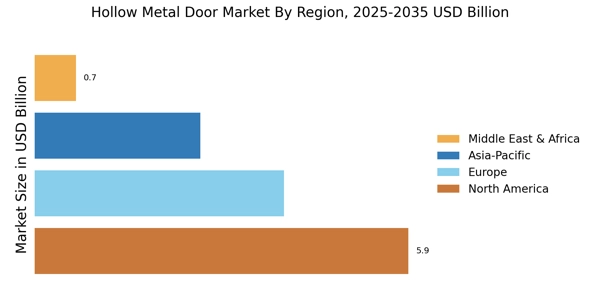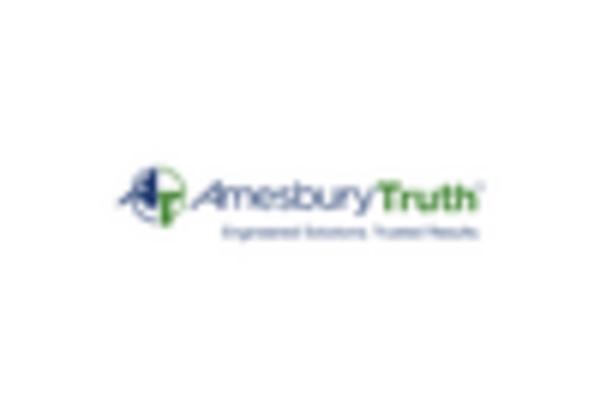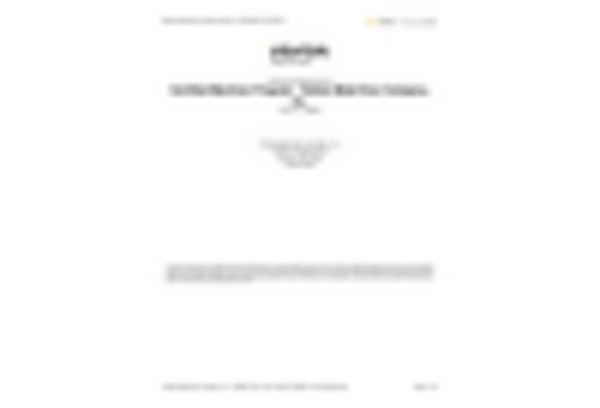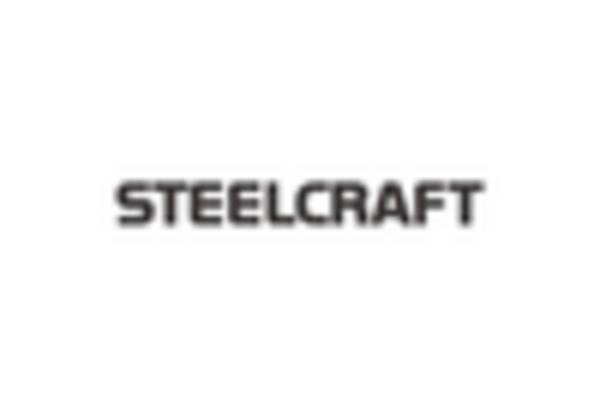Rising Construction Activities
The ongoing expansion in construction activities across various sectors appears to be a primary driver for the Hollow Metal Door Market. As urbanization accelerates, the demand for commercial and residential buildings increases, leading to a heightened need for durable and secure entry solutions. In recent years, the construction sector has witnessed a compound annual growth rate (CAGR) of approximately 4.5%, which correlates with the rising adoption of hollow metal doors. These doors are favored for their strength, security features, and fire resistance, making them a preferred choice in high-traffic areas. Furthermore, the integration of hollow metal doors in new constructions and renovations is likely to continue, as builders seek to meet safety standards and enhance the overall aesthetic appeal of their projects.
Increased Focus on Safety Regulations
The heightened emphasis on safety regulations and building codes significantly influences the Hollow Metal Door Market. Governments and regulatory bodies are increasingly mandating stringent safety measures in commercial and industrial buildings, which often include the installation of fire-rated and secure entry doors. This trend is particularly evident in sectors such as healthcare, education, and manufacturing, where safety is paramount. The market for hollow metal doors is projected to grow as compliance with these regulations becomes more critical. For instance, the demand for fire-rated doors is expected to rise, as they are essential for ensuring occupant safety during emergencies. Consequently, manufacturers are likely to innovate and enhance their product offerings to meet these evolving safety standards.
Technological Advancements in Manufacturing
Technological advancements in manufacturing processes are poised to drive the Hollow Metal Door Market forward. Innovations such as automated production lines and advanced materials are enhancing the efficiency and quality of hollow metal doors. These advancements not only reduce production costs but also improve the durability and performance of the doors. For instance, the introduction of lightweight yet robust materials allows for easier installation and better energy efficiency. As manufacturers adopt these technologies, they are likely to capture a larger market share by offering superior products that meet the demands of modern construction projects. The integration of smart technology in door systems, such as access control and monitoring, may also emerge as a trend, further propelling market growth.
Growing Demand for Energy-Efficient Solutions
The increasing awareness of energy efficiency and sustainability is driving the Hollow Metal Door Market. As businesses and consumers alike seek to reduce their carbon footprint, the demand for energy-efficient building materials is on the rise. Hollow metal doors, particularly those with thermal insulation properties, are becoming increasingly popular due to their ability to minimize energy loss. This trend is supported by various government initiatives aimed at promoting energy-efficient construction practices. The market for energy-efficient doors is expected to expand as more stakeholders recognize the long-term cost savings associated with reduced energy consumption. Consequently, manufacturers are likely to focus on developing products that not only meet energy efficiency standards but also align with sustainable building practices.
Expansion of the Retail and Hospitality Sectors
The expansion of the retail and hospitality sectors is likely to serve as a catalyst for the Hollow Metal Door Market. As new retail outlets, hotels, and restaurants continue to emerge, the need for secure and aesthetically pleasing entry solutions becomes increasingly apparent. Hollow metal doors are often chosen for their durability and ability to withstand high traffic, making them ideal for these environments. The hospitality sector, in particular, is expected to drive demand as establishments seek to enhance security while maintaining an inviting atmosphere. Additionally, the trend towards open-concept designs in retail spaces may lead to innovative applications of hollow metal doors, further broadening their market appeal. This growth in the retail and hospitality sectors could significantly impact the overall demand for hollow metal doors in the coming years.


















Leave a Comment